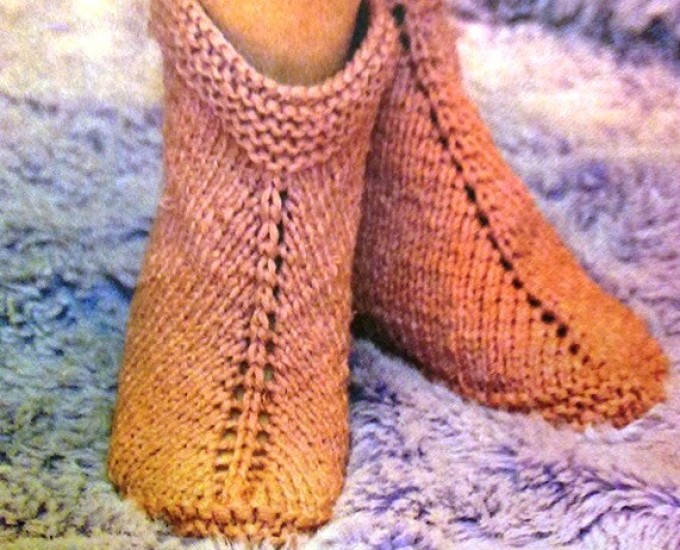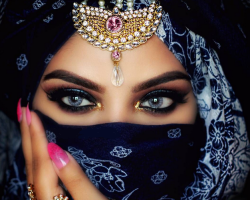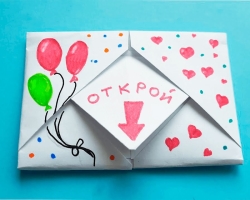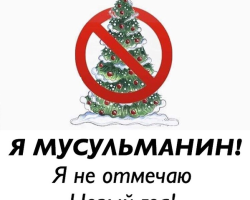Content
- How to knit slippers with knitting needles, crochet?
- Beautiful knitted slippers with knitting needles, description
- Slips with knitting needles for beginners
- Men's knitted slippers with knitting needles, scheme
- Video: How to crochet men's slippers?
- Women's knitted slippers with knitting needles, scheme
- Children's knitted slippers with knitting needles, scheme
- Knitted slippers on felt soles, scheme
- Slippers-knitted knitting needles, scheme
- Video: We knit Japanese slippers, knitting bags
- Video: Crochet Sapa Saps Master class
- How to tie slippers with knitting needles and crochet: tips and reviews
- Video: knitted slippers with knitting needles without seams. Knitted Slippers
How to knit slippers with knitting needles, crochet?
Before you start working on slippers, select material and tools.

Yarn. What you need to know?
Varieties of yarn
- Natural
- cotton
Pros: yarn, easy to work; Wide colors
Cons: prolonged drying after washing; With improper temperature washing mode, the product can "sit down"
- linen
Pros: yarn, easy to work; fast drying after washing
Cons: the color scheme is limited by natural shades; With improper temperature washing mode, the product can "sit down"
- wool
Pros: warm yarn; Large selection of colors and types
Cons: the yarn is very whimsical in subsequent care, with improper temperature washing mode, the product can “sit down”, with improper drying/ironing - stretch; often irritates the skin and can cause allergic reactions (especially in children); quickly wear out with active wear
- Mixed
Combines the best properties of natural and artificial materials
- Artificial
- polyester
- acrylic
Pros: a good selection of colors; Light yarn in work; good heat capacity (especially with acrylic)
Cons: yarn can be electricity; characterized by poor hygroscopicity; In the process of socks, the so -called "coils" may appear on the product; some note the characteristic "creak" of the yarn
Knitting needles and hook for knitting. How to choose a tool number?
- For a thread with a thickness of less than 4 mm, the thickness of the spokes should be 1 mm larger. For example, the thickness of the yarn in the figure 1 mm, knitting needles - 2 mm
- For a thread with a thickness of more than 4 mm, the thickness of the spokes should be 1.5-2 mm larger. For yarn 3 mm thick, the best working knitting needles will be 6 mm knitting needles

- If you are going to knit a voluminous pattern with braids (harnesses), the size of the spokes should be 0.5 mm larger than
- An openwork pattern or pattern with lowered loops requires knitting needles 0.5 mm less than assumed based on the thickness of the yarn
A small memo on choosing the thickness of the yarn and knitting needles is presented in the infographic below

The hook is selected by analogy with the knitting needles
Important: the number of the tool corresponds to its thickness. For example, No. 2.5 means that the thickness of the spokes/hook is 2.5 mm
Knitting main techniques for knitting needles
- The simplest set of loops with knitting needles
Advice. If you work with thin yarn, a set of loops is best done on 2 knitting needles, so the edge will be more elastic
- To calculate the length of the free end of the thread for the set of loops in centimeters, the number of loops in the description multiply by 2
- Make a loop in any way convenient for you and put it on the knitting needles, folded together. Tighten the loop a little
- Throw the threads around the thumb and index fingers of the left hand. The free end of the thread should be on the thumb, the thread from the ball on the index. Fix the threads, pressing your free fingers to the palm of your hand
- Hold the loop on the knitting needles with the index finger of the right hand
- Close the thread lying around the thumb (movement 1 red dashed line in the diagram)
- Drive a knitting needle with a hook on the left side of the index finger (movement 2 dashed line in the diagram)
- Make the knitting needles from top to bottom → Under the thread on the left of the thumb. Then drop the thread from the thumb by forming a loop on the knitting needle (movement of 3 dashed line in the diagram). Dial the required number of loops

- How to knit a front loop

- How to knit a wrong loop

- How to knit a cloak

- How to knit two loops together with a front with a slope to the right

- How to knit two loops together with a front with a slope to the left

- How to close the loops

Knitting main techniques for hook
The first loop of the air chain

- First loop and air chain

- Nakid column, crochet half -stolch, crochet

- Elastic band from columns, ring, connecting column

The basics are passed, proceed to knitting
Beautiful knitted slippers with knitting needles, description
Trend slippers in the style of patchwork will definitely please and warm the people dear to you. The knitting technique is very simple and even beginner knitters.
In addition, the “squares related diagonally” pattern is suitable not only for knitting slippers, but also for the manufacture of rugs or decorative pillows

Small preface before work
- Determine the length of the foot. How to do this correctly will tell the photo below

- The diagonal of the base square should be equal to ½ of the length of the foot. For example, for the legs with shoes size 37 and the length of the foot 22.6-23.3 cm, you will need a square with a diagonal of 11.3-11.7 cm and a side of 8-8.5 cm
Advice. Before starting work directly on the slippers, tie a square industry from the selected yarn and calculate the loops, taking into account the working characteristics of the yarn you have chosen, your knitting manner
- The description below suggests that the finished product will correspond to the average female size (37-38 or m)
- The necessary materials and tools:
- yarn of your choice (for female and men's slippers-300-400 g, for children-150-200 g)
- knitting needles 2.25 (correspond to the characteristics of the yarn)
- Basic knitting - patch
Front and wrong rows are knitted by facial loops
- Knitting density: 46 loops \u003d 10 cm
How to knit a square 1 and square 2. Design of a mouse/toe of the product
Take 37 loops on knitting needles
1st row and all odd: facial loops
2nd row: 1 hem, 16 facial loops, 3 loops together with the front (remove the 1st of the three loops without knitting, the 2nd and 3rd knit together the front, put on the removed loop on the knitted), 16 facial, 1 hem . After knitting a row, 35 loops remained on the spoke
3rd row: 1 hem, 15 front, 3 loops together with the front, 15 facial, 1 hem. After knitting a row on the spoke - 33 loops
5th row: 1 hem, 14 facial, 3 loops together with the front, 14 facial, 1 hem. After knitting a row on the spoke - 31 loops
Knit, reducing three loops in each even row, until 9 loops remain on the knitting needles

Make a control measurement of the bound element and make sure that the diagonal of the square is ½ of the length of the future owner of the slippers

You have 9 square loops left on your knitting needle 1. They will become the basis for the square 2
1st row: 9 loops of the square 1 with facial loops, add 14 loops along the bromic row of the left side of the square. On the spoke: 23 loops
2 row: knit 14 loops with the front and extend the row with 14 loops on the other bromic side of the square. You have 37 loops on your knitting needle

Knit by analogy with square 1
All odd ranks: front
All even: 3 central loops knit together the front
When the last loop is closed, you will get a kind of “boat” that will form a mouse of the future slip

How to knit a square 3 and square 4. Design of the side parts of the product
Dial 37 facial loops on the bromous row of one of the sides of the sock
Keep knitting according to the scheme
All odd ranks: front
All even: 3 central loops knit together the front

When a square 3 is decorated, tie a symmetrical square 4

How to knit a square 5 and square 6. Design of the heel

Continue to work according to the worked out scheme
Dial on the bromary sides of the squares (3 and 4) 37 facial loops
All odd rows: facial loops
All even: 3 central loops knit together the front
Keep knitting until 9 loops are left on the knitting needle
By analogy with the design of the sock of the product, arrange the last square of the heel

It remains to arrange the armhole for the ankles and the slippers is ready. The algorithm of knitting the second slippage is similar to the first
The armhole is designed in any way convenient for you
- with the help of hitchfuls
- hook

Slips with knitting needles for beginners
If the previous slippers seem to you too complicated because of the elements that are attached to each other, try to link the model presented below

All you need to do is connect 8 squares with a side of 9 cm and a diagonal of 12.7 (foot length 25 cm, size 39-40)
Basic knitting - patch
After all the squares are ready, place them in accordance with the scheme and sew them


Wonderful and cozy home -made shoes are ready
Men's knitted slippers with knitting needles, scheme

This model differs in ease of performance, since there is no typical of slippers of the “sock” decrease in loops, which scares away inexperienced knitters.
Such slippers will warm both male legs and small children's tops.
Materials and tools:
- Thick yarn with density (110 m/50 g) - 200 g
- Knitting needles (in accordance with yarn) - #4.5
Basic knitting: facial (odd rows are knitted with facial loops, even - wrong ones)
Additional knitting: patch (all rows are knitted with facial loops)
Knitting density: 16 loops \u003d 10 cm
Sliding knitting algorithm, size 43 (27 cm along the length of the foot)
Upper cuffs
- Take 55 loops on knitting needles
- Knit the first nine rows of a pantry viscous
- 10th row: all the wrong loops
middle part
Highlight the central loop of knitting (28th in a row). The loop can be distinguished by a pin, a special rings-marker, a bright thread
11th row: Carcoon loop, 26 facial loops, cloak, central loop is knitted with a front, cloak, 26 facial loops, an ingenious loop. On the spoke - 57 loops
12th row and all subsequent even ranks to the 38th row: wrong loops
13th and all subsequent odd rows to the 37th row: an ingenious loop, a section of facial loops, a crochet, a central loop is knitted with a front, a crochet, a section of facial loops, a chomic loop
37th row: crum loop, 40 facial loops, cloak, central front loop, cloak, 40 facial loops, chomic loop. On the knitting needles - 85 loops
Lower Kant
39th row: all facial (hem, 83 loops, hem)
40th row: all facial
41st row: all facial
42nd row: all facial
Sole
43rd row: hem, 2 loops together with a front with a slope to the left, 37 front loops, 2 loops along with an inclination to the right, central front, 2 loops along with an inclination to the right, 37 loops of the front, 2 loops along with a slope to the left, a brown loop. On the knitting needles - 81 loops
44th row and all even rows: wrong loops
45th row: hem, 2 loops together with a front with a slope to the left, 35 front loops, 2 loops along with an inclination to the right, central front, 2 loops along with an inclination to the right, 35 loops of the front, 2 loops along with an inclination to the left, a brown loop. On knitting needles - 77 loops
47th row: Imark, 2 loops together with a front with a slope to the left, 33 front loops, 2 loops along with an inclination to the right, central front, 2 loops along with an inclination to the right, 33 front loops, 2 loops along with a slope to the left, a brown loop. On knitting needles - 73 loops
Close the loops.

The second semicor is fed similarly. Perform the seam along the hem and sole.
Video: How to crochet men's slippers?
Women's knitted slippers with knitting needles, scheme
Delicate and very elegant slippers, look like elegant lobes-ballet shoes

Materials and tools:
- Yarn-100-150 g
- Knitting needles (in accordance with yarn) - #2.5
Basic knitting: facial (odd rows are knitted with facial loops, even - wrong ones)
Additional knitting: patch (all rows are knitted with facial loops)
Knitting density: 20 loops \u003d 10 cm
Sliding knitting algorithm, size 37 (23 cm in length of the foot)
Take 35 loops on knitting needles, continue to work, focusing on the scheme
 1st row: crum loop, 33 facial loops, hem
1st row: crum loop, 33 facial loops, hem
2nd row: brown loop, 32 front loops, add one loop from the broach, 1 front, hem
3rd and all subsequent ranks until the 17th: facial loops
4th row: brown loop, 33 facial loops, add one loop from a broach, 1 front, hem. On the spoke - 37 loops
6th row: knit by analogy with the 4th.
Repeat the addition of loops until there are 44 loops on the knitting needles
Close 20 loops from the flat side B (see the diagram), knit the remaining loops with the front stitch (1O rows)
From the side, type 20 loops again. Knit 18 rows with a gastard viscous, removing at the beginning of each front row from the side A 1 loop (knit 2 loops 1 front). Repeat the decrease 9 times
From the side in close 8 loops. Start the design of the sole of the semi -para (you can use a darker thread)
The sole is knitted with a prying viscous. Add in each even row 1 front loop on both sides of the row. Repeat the addition 8 times. The number of loops will increase by 16.
Then reduce in each even row 1 loop on each side row. Repeat the decrease 8 times until you return to the original number of loops.
Close the loops. Perform the seams.

How to knit a rose:
- Take 50 loops on knitting needles
- Knit 6 rows with the front surface
- Close the loops
- Twist the tied tape in the shape of a flower, fix the threads
- Sew a rose to a slipper
You can decorate the slippers with decorative bows, buttons, sequins, etc.
The second half paws in mirror symmetry
Children's knitted slippers with knitting needles, scheme
By analogy with the previous scheme, you can connect wonderful children's slippers
 And another wonderful idea of \u200b\u200bsimple children's slippers tied with their own hands
And another wonderful idea of \u200b\u200bsimple children's slippers tied with their own hands
For the manufacture of such slippers you will need two rectangles:
- one for the sole. Accordingly, the width of this element is equal to the width of the foot, the length is the length of the foot. Do not forget about the allowances for the seams!
- the second is the top of the slipper. The width should coincide with the width of the rectangle-land, the length is 2 times the length of the first part
Sew the workpieces of rectangles according to the scheme and decorate at your discretion
Important: slippers are sewn in mirror reflection!

Knitted slippers on felt soles, scheme
The proposed option will not require much time and effort, but it will provide heat and comfort
All you need:
- felt sole
- yarn
- knitting needles and needles and threads for stitching
- Tie a long canvas in the form of a scarf. The length and width of the canvas depend on the insole size

- When the canvas is ready, sew it to the insole, focusing on the diagram to children's slippers, presented above, and the photo below

 Slippers-knitted knitting needles, scheme
Slippers-knitted knitting needles, scheme
Slips-knots, known as Japanese knitted slippers, are very comfortable and, like everything Japanese, extremely simple to manufacture.
 Video: We knit Japanese slippers, knitting bags
Video: We knit Japanese slippers, knitting bags
Crochet knitted slippers, scheme
A detailed master class on knitting slippers hook is shown in the video below
Video: Crochet Sapa Saps Master class
How to tie slippers with knitting needles and crochet: tips and reviews
Video "Knitted slippers with knitting needles without seams. Knitted Slippers "will reveal the secrets of skill




 Slippers-knitted knitting needles, scheme
Slippers-knitted knitting needles, scheme Video: We knit Japanese slippers, knitting bags
Video: We knit Japanese slippers, knitting bags




